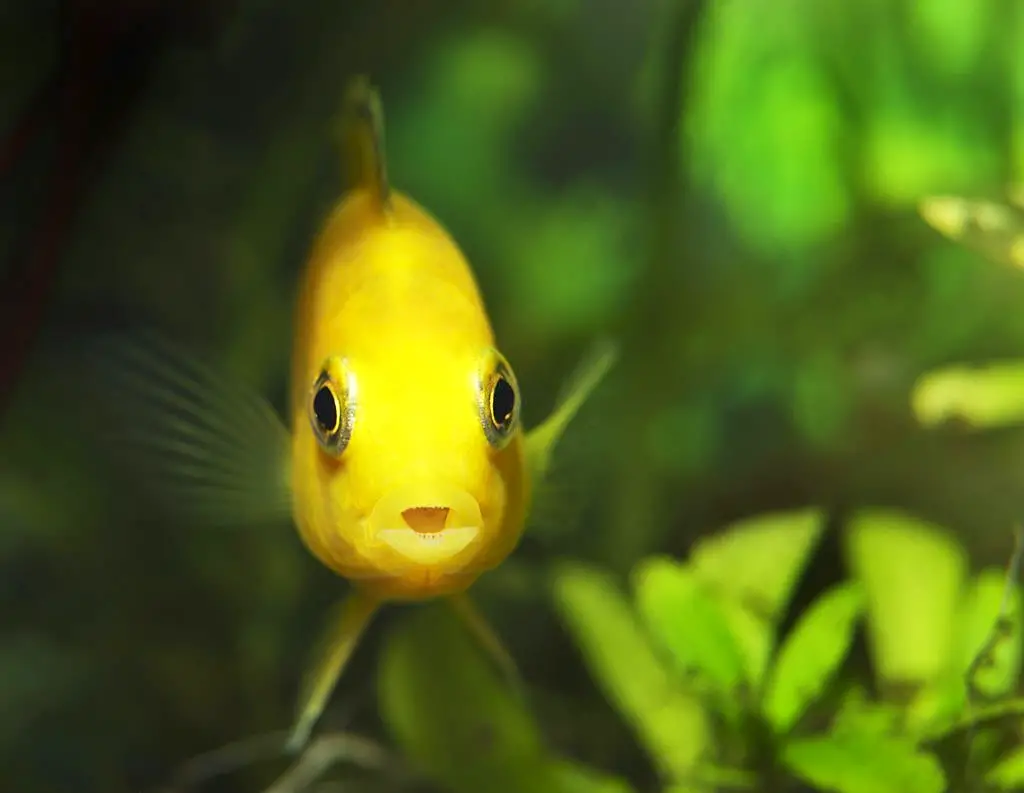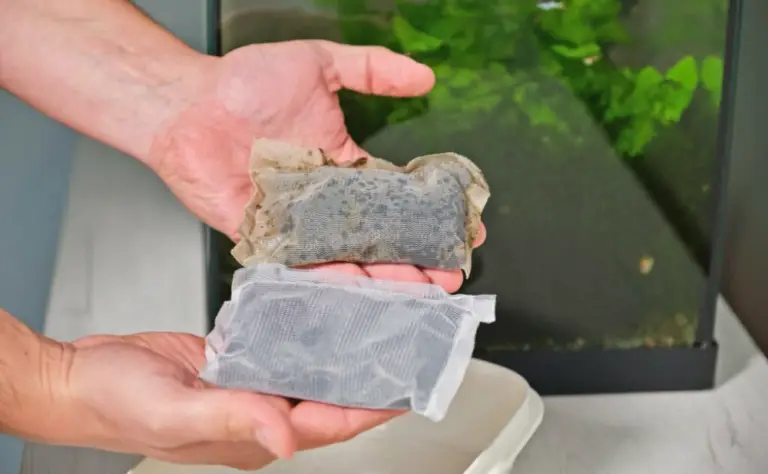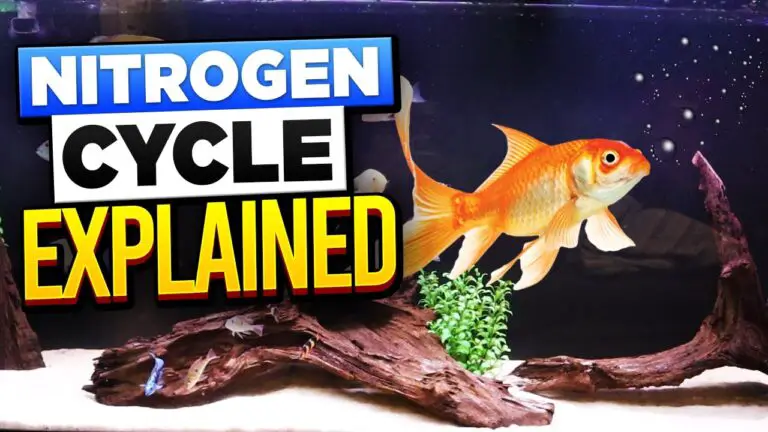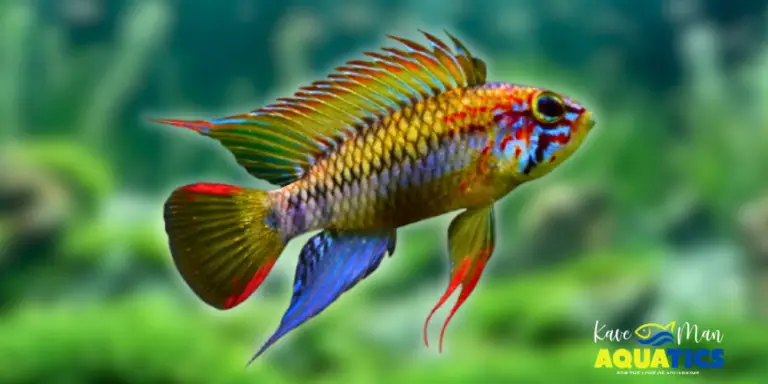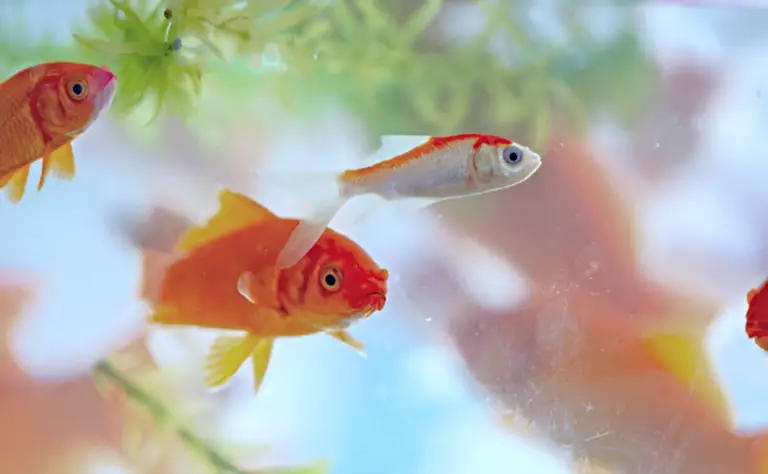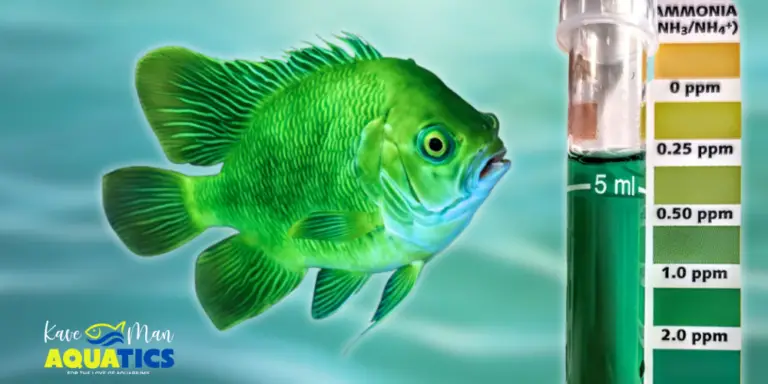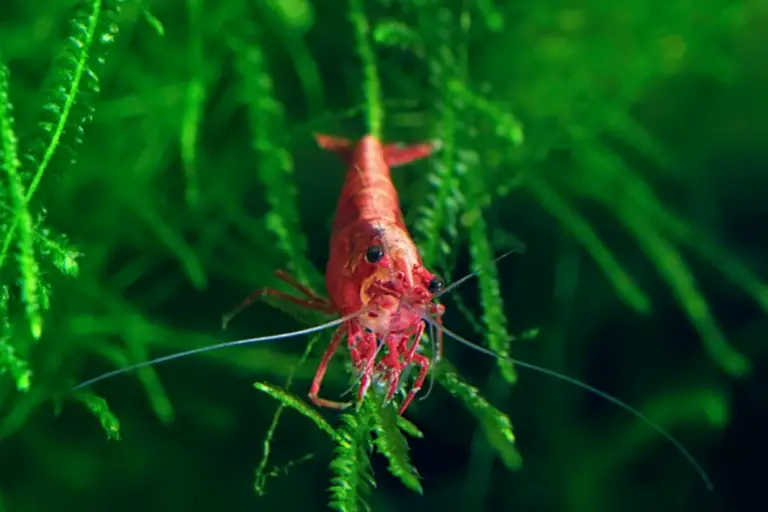Complete Aquarium Checklist for Beginners: 10+ Essential Items
How can an aquarium checklist help beginners? Fish are frequently seen as easy, no-fuss pets. While it is true that most fish don’t require much care and attention, setting up an aquarium may be a considerably greater effort than many people expect.
An unclean aquarium can be fatal to fish, so learn everything you can before bringing any creatures into it. You’ll find a helpful checklist as well as extensive descriptions of what to look for when purchasing your first aquarium below.
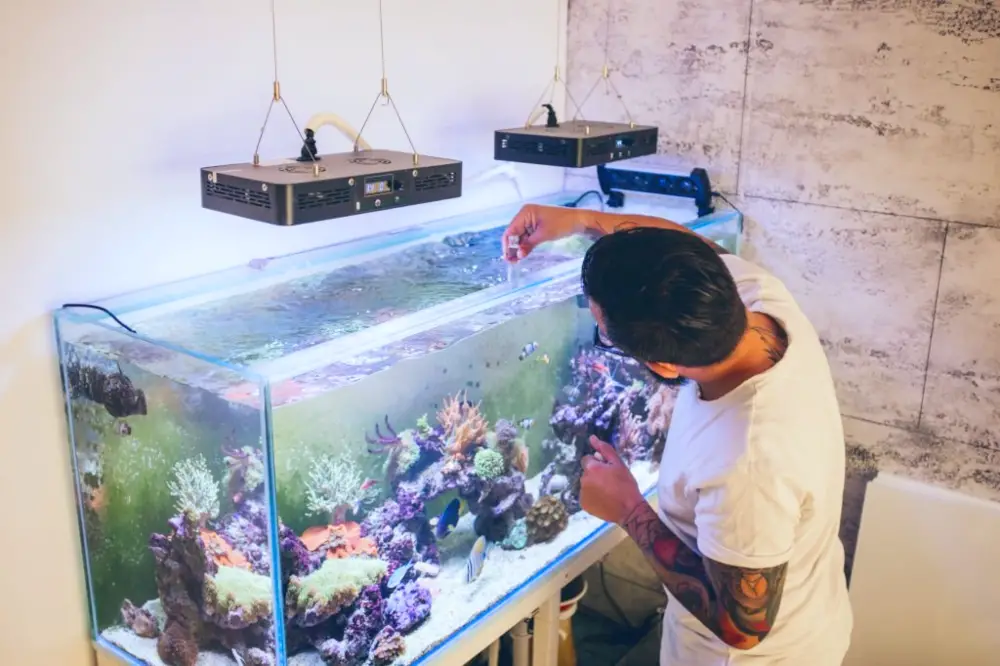
Aquarium Checklist: Essential Items
Let’s start off with the essential items you can add to your aquarium checklist.
Aquarium
Shocker! An aquarium or tank is the most important item on your aquarium checklist. Larger aquariums are always preferable, but you need to keep in mind the available space you have. A 55-gallon aquarium is unsuitable for a dorm room. A 20-gallon aquarium, on the other hand, can be found practically anywhere.
Avoid tall, narrow aquariums in favor of shorter, longer aquariums with more swimming room and surface area for air exchange. Many people prefer glass aquariums, however, acrylic aquariums are lighter and more durable, making them ideal for use with children in the home.
Keep in mind that acrylic aquariums require support all the way around the bottom surface, not just the sides. This is one of the many things that you need to consider when deciding on a fish tank stand.
Stand
Aquariums are hefty — weighing around 10 pounds per gallon of water capacity — so plan accordingly. A particle board bookshelf is typically not strong enough to support anything larger than a small aquarium. Use a genuine aquarium stand intended to support the weight of an aquarium.
Most aquarium warranties are null and invalid if an aquarium stand does not properly support the aquarium. If you are adept with a hammer and saw, there are blueprints available for creating your own stand.
Lid or Hood
Aquariums can be purchased with a lid separate from the light, or the lid and light can be combined into one element known as the “hood.” The lid section of the tank covers the aquarium and prevents fish from leaping out.
It also prevents evaporation and keeps the light from becoming damp. If the lid is coupled with the light, it is frequently constructed of plastic, which is less costly, lighter, and less prone to breakage. Glass lids are easier to clean, give a more secure cover, and let more light into the aquarium.
Light
Although the aquarium light is frequently included with the lid, you may purchase it separately. Incandescent, halogen, fluorescent, mercury vapor, metal halide, and Light Emitting Diode (LED) bulbs are all available.
The fluorescent light is a wonderful choice for a beginner since it’s less expensive to run and considerably cooler. LED lights are becoming more widely accessible and are the ideal option since they consume less power than other bulbs, are less expensive to run, and don’t heat the water.
Filtration System
The filtering system is an essential component of your aquarium checklist. Get the greatest filter you can afford to keep the water quality pure and the fish healthy. A power filter with a bio wheel system is highly recommended, despite the fact that there are various designs available.
The filter’s size must correspond to the size of the aquarium. Choose a filter with a flow rate that filters your aquarium’s water at least four times per hour. A 20-gallon tank, for example, should have a filter with a flow rate of at least 80 gallons per hour (GPH).
When it’s close, always go with a more significant flow rate. Canister filters are the greatest option of filter for larger aquariums. But what about hang-on-back (HOB) filters? We compared canister filters and HOB filters.
Heater
Each fish species has an optimal temperature range for health. Most fish demand temperatures ranging from 74 to 77 degrees Fahrenheit. Unless your residence is always in that temperature range, you’ll need a heater on your aquarium checklist.
Aquarium heaters are available as hang-on-the-tank or submersible types, with either a numerical or a simple up-and-down control. Choose a numerically controlled submersible — it will cost extra, but it is well worth it.
When it comes to wattage, a good rule of thumb is to utilize 5 watts per gallon for smaller tanks and 3 watts per gallon for bigger tanks. However, the wattage required is affected by the room temperature — colder areas may require more watts per gallon.
For aquariums bigger than 40 gallons, two smaller heaters, one at each end of the tank, are preferable to one larger heater. This improves heat diffusion throughout the aquarium.
Thermometer
Liquid crystal stick-on thermometers are cheap, easy to read, and often accurate enough for everyday usage. If you intend to breed fish or keep sensitive fish, you should use a water-based thermometer. Learn more about aquarium thermometers and their pros and cons to find the right thermometer for your aquarium.
Substrate
This is the substance that covers the aquarium’s bottom. Small, smooth, dark-colored gravel is often preferred — there are different types of substrate you can choose from. For every gallon of water, get one pound of substrate. Rinse the gravel well before adding it to the aquarium.
Fishnet
Select a medium-sized, high-quality fishnet. Get two nets if possible. Catching fish is easier with two nets, and having a backup net on hand is usually a good idea. You never know when one of your nets will tear or go misplaced.
Handle length should be appropriate to the size of your aquarium so that while collecting fish in a large aquarium, you don’t have to stick your entire arm into the water.
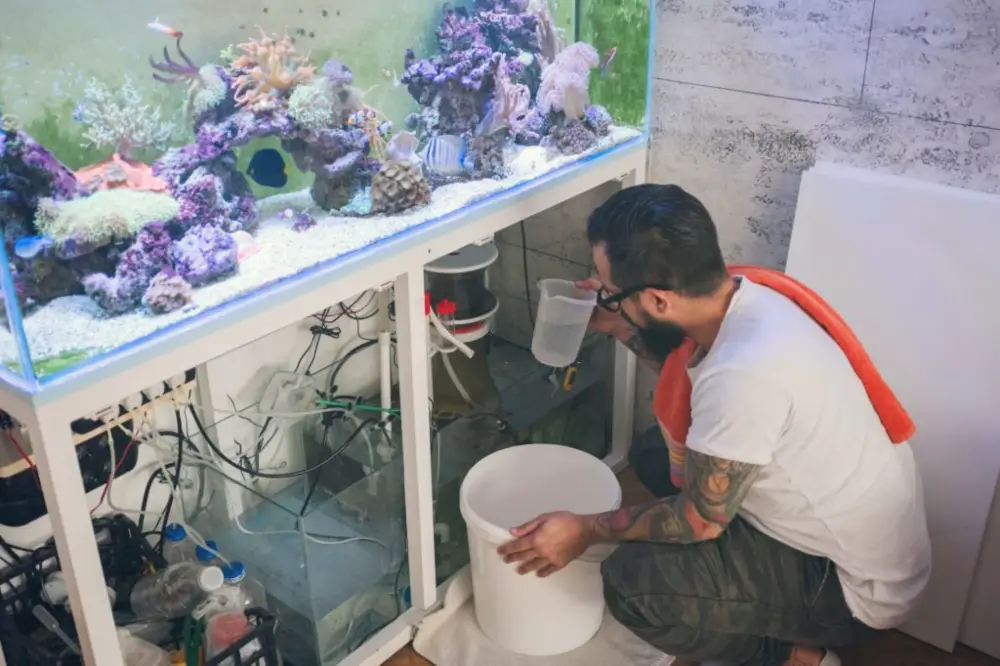
Aquarium Checklist: Maintenance Items
Next, you’ll want to add the following maintenance items to your aquarium checklist.
Water Conditioner
Before fish may be safely put into an aquarium, the tap water must be dechlorinated unless it is aged. Select a water conditioner that can remove chlorine, ammonia, and heavy metals. Seachem Safe and Seachem Prime are excellent water dechlorinators.
When filling the tank with tap water and performing your monthly water changes, it should be utilized. Knowing when to add a dechlorinator to your aquarium is equally as important.
Test Kits
It’s vital to test the water in a newly set up aquarium. At the very least, you should have ammonia, nitrite, and pH testing kits on hand. There are additional nitrate, hardness, alkalinity, and chlorine tests available. The API Master Water Test Kit is perfect — and with an easy step-by-step guide to use this kit, you’ll be all set.
Multi-test strips will suffice if you follow the manufacturer’s instructions and keep them carefully. In-tank testing monitors have recently gained popularity. These are positioned against the tank wall within the aquarium and continually monitor the water chemistry.
Check out these in-tank testing monitors in action:
These goods are often only useful for a month or two, so make sure to replace them on a regular basis. The most crucial aspect of keeping aquarium fish healthy is maintaining correct water quality.
Siphon
To vacuum the substrate and replace the water, a siphoning tool is required. Simple siphoning tools utilize gravity to siphon, whereas more complex siphoning tools employ water pressure from the faucet. Learn more on how to vacuum your substrate like a pro.
If you can afford it, get the tap run models since they are much easier to use to remove and refill water. Using gravel vacuums makes monthly water changes more convenient. They remove the debris from the aquarium’s bottom while withdrawing water for a partial water change.
Algae Scrubber
Algae will naturally grow in an aquarium at some point. An algae pad or scraper is an essential piece of maintenance equipment for your aquarium maintenance routine. The algae magnet is another possibility.
This allows you to wipe the algae from the inside of the glass without having to put your hand into the aquarium by utilizing a magnet on the outside. You’ll have to pay a bit extra, but the convenience is well worth it.
Water Bucket
Sure, you may already have a bucket, but if it contained soap or other chemicals, the residue might be toxic to fish. Purchase a new one to be used just for aquarium care. To ensure safety, write “For Aquarium Use Only” on the bucket with an indelible marker.
Reference Books
To round off the set, pick up a decent all-purpose aquarium reference book or two. A fish atlas is a fantastic alternative for seasoned fish owners. These will provide information about the native habitat, life history, and breeding methods of the fish species you have chosen to maintain in your aquarium.
Alternatively, you can surf around the Internet and YouTube for credible sources — like KaveMan Aquatics’ blog and YouTube channel.
10 Aquarium Beginner Mistakes to Avoid
In conjunction with this aquarium checklist, here are 10 beginner mistakes to avoid:
More Aquarium Beginner Content by KaveMan Aquatics
We hope you find this aquarium checklist for beginners helpful. Can’t get enough of aquarium beginner content? We’ve got a dedicated aquarium beginners article category and a YouTube playlist that focuses solely on African cichlids.

KaveMan Aquatics also offers an online video course, Keeping African Cichlids. If you feel that that’s not enough, we also offer 1-on-1 consulting services for that personal touch.
-
Complete Aquarium Checklist for Beginners: 10+ Essential Items
Are you a beginner aquarist and don’t know where to start? Here is a complete aquarium checklist for beginners containing 10+ essential items.

